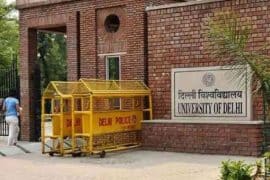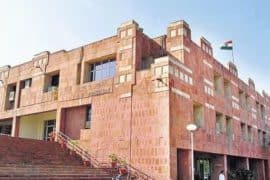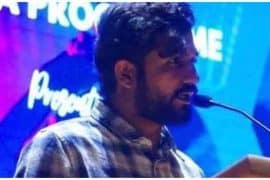The lesser known art forms of Bengal have seen a rise in popularity in contemporary times. This is the story of Baul-geeti, an integral part of Bengal’s Oral traditions, which posed questions two centuries back that are still relevant today.
Growing up in a Bengali household in North Kolkata, my summer break afternoons were often filled with an elaborate plate of jackfruit, mangoes and watermelons that my grandmother brought in after lunch. What would accompany this huge palette of the various shades of yellows and reds, were stories of Shantiniketan and Birbhum, where my grandma had spent a considerable portion of her youth. My drowsy eyes would look at her face light up as she spoke about the men who had no home, who wandered and stayed wherever their hearts wanted, who considered the world their home. Her broken, out-of-breath notes sang of these men in big alkhallas. She sang of the minstrels who have been a part and parcel of Bengal, she sang of the Bauls.
The Bauls are folk artists of Bengal. They renounce society and claim the open skies and lands as their country. They are nomads who sing of the Supreme One and their love towards the celestial entity. They believe in no discriminatory factors—religion, gender, caste, creed, race; they preach and practise Deha-tatta, which holds that every being is equal with the Supreme One himself, who resides in us all. It’s not just limited to living beings either. Bauls respect and love beings from all species, big and small. These wandering minstrels rejected social hierarchies and divisive constructs. Their radical rejection of social institutions manifests itself in the emancipatory enactment of this form of music where they find and celebrate love, life, and liberation. You, according to the Bauls, can only be one step closer to God by helping other living beings.
Baul music is often composed without any formal training or any record. The music of the ektara,
dotara and, at times, khonjoni, synthesises with their own voices to create, what can be called, one
of the greatest cultural symbols of Bengal. This culture was born in Birbhum and crossed boundaries to the different eastern regions of our country, including the international border of Bangladesh. The most fascinating aspect of this entire art form has to be its lack of recorded material. It forms a major chunk of the oral traditions of the region, with minimal written songs. The Bauls sing from their memory, and their heart. The complex compositions are passed down from one generation to another. Yet, almost everyone who listens to their music finds themselves in the peculiar daze of the heart-wrenching and soulful tunes of the dotara.
The Baul community also has a male-dominated image in popular culture where they are depicted in huge saffron robes, heavy beards and matted locks of hair, rudraksha around their wrists and neck and a dotara. The saffron alkhalla, or the loose garment, is a way of showcasing their association with the divine. The women of this community, on the other hand, wear simple white sarees and sport matted hair but ditch the rudraksha. They are seldom included by the general public in Baul narratives even though they have had similar contributions to the art.
We cannot talk about Baul-or Baul culture without mentioning the man who was responsible for
bringing it to the world—Lalon Fakir Shah, the greatest Baul artist to have ever existed. The origin of Lalon Fakir is still debatable. Nobody till date knows where exactly he was born, which religion or caste he was born into or who his parents were. Some say he was a Muslim while others claim he was a Hindu. Even his disciples, upon his death, never revealed his place of origin or his religion.
Fakir Shah was a monumental figure in composing Baul-geeti, with thousands of Bengali songs
to his name. Out of all these, only 600 were documented after his demise. He was the
person who inspired the whole concept of contemporary Baul gaan and their philosophies as
we know them today. What Lalon preached was essentially the result of syncretism of various
philosophies and traditions like Hinduism, Islam, Buddhism, and Jainism. Like today, he was a radical opponent of all established institutions, to the extent wherein one of his compositions, he
sang, “If the creator is one, why so many religions?”.
The captivating angle to his songs were his vocal approach to issues of caste, communalism,
and patriarchy two hundred years back. Songs like,
“Brahman, chandal, Chamaar,
Cobbler
Everyone is cleansed by the same
water”
opposed the oppressive system with such poetic poignance that it resonates with people till date. Even issues like patriarchy were addressed through lyrics which posed questions like,
“A Muslim is marked by the sign of circumcision; but how should you
mark a woman?”
(Translated by Azfar Hussain)
Personally, if there has to be one line by Fakir Lalon that really stirred
me, it would be-
“A person who secretly has rice
from the hearth of a prostitute
What does his religion have to do
with it?”
Folk music, or any music that had subaltern roots, was looked down upon by the Bhodrolok i.e. gentlemen of Bengal. It rose as an alternate narrative and culture to the hegemonic forms of art that were prevalent. They were an attempt for some communities to establish their place in the existing power structures of society at the time, while in other cases, like those of the Bauls, they were a harsh critique of the ways of the world and the conditions that mankind had created in order to discriminate against others.
In contemporary times, the religious extremism that we often encounter was exactly what these
cultures opposed. The question of what religion you were born with and which religion you’ll leave the world with was one question that the Bauls asked society.
Interestingly, Baul-geeti, something that went against modern-day capitalism, has become a child of the same today. In the 60s and the 70s, the Bauls went global and dazzled the world with their talent. Purna Das Baul, the Baul Samrat, even played with music sensations like Bob Dylan and Tina Turner. In more recent times, Kartik Das Baul went from singing on the local trains of Kolkata for some loose change to being one of the top Baul artists in the country. This in no way is a claim that this commercialisation is bad. It was necessary for these unrecognised artists to spread their creations. And it was almost inevitable, since sustaining oneself in 2022 certainly requires a lot more monetary resources than at any other time in history.
For someone from the land of these artists, to witness the world enjoy their music without ever trying to decipher the underlying meaning in their songs seems like an insult to the art, the philosophy and the artists. It is a bittersweet feeling, as a bangaali, that something that
is so close to my heart, is not just mine anymore—it is the world’s to share; on the other hand, there is pride and pride only that the beautiful language and the songs reach millions today.
Read Also: My City, My Pujo: An Open Art Gallery
Featured Image Credits: Osho World
Debarati Mitra
[email protected]




Comments are closed.